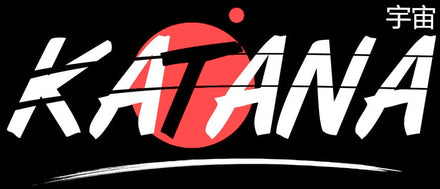If you're interested in traditional Japanese sabres, you have probably heard of the tachi, a Japanese sword that is the ancestor of the katana. But do you know when this weapon dates back to? Do you know its characteristics, its origin, and what sets it apart from the katana? If you want to learn more about the tachi, you've come to the right place. So, follow the guide...
The Etymology of Tachi
The name tachi or 太刀 is said to come from the verb tachikiru, which means to cut in two. There's no doubt about the purpose of this weapon; its name is quite revealing. When studying the kanji that make it up, 刀 refers to a sword, and 太 means large, hence the denomination "broad sword." Further back in history, it was written as 大刀, with the second character corresponding to a man with raised arms, signifying "big" or "large."
The Legend of Tachi

It was a famous blacksmith, Amakuni Yasutsuna, living around the year 700, who is credited with creating the tachi. He lived in the Yamato province and was employed by the emperor to forge weapons for his warriors. He even led a group of blacksmiths for this task. A legend is the origin of this creation. One day, Amakuni Yasutsuna and his son Amakura were in front of their store when the emperor returned with his troops. Usually, he would greet the blacksmith and his son, but this time, he did not, and he did not even look at them. Amakuni observed the warriors and noticed that many swords were damaged or even broken. The father and son examined these damaged swords to find out what was wrong. They concluded that these swords lacked shock resistance due to mediocre forging work. Amakuni then vowed to create a sword that would be strong enough not to break. The two men locked themselves in the forge and prayed to Shinto deities for seven days and seven nights. At the end of this period, the blacksmith acquired the best available iron ore and turned it into steel. Then the work began. After a month, exhausted from working tirelessly, they obtained a sword with a curved single-edged blade. Until then, swords were straight and double-edged. Other blacksmiths, seeing this, considered them crazy, but that didn't stop Amakuni from continuing to polish and sharpen his blade. Over the following months, Amakuni and his son persisted in forging weapons using their technique. A new war started the following spring. When the samurais returned, Amakuni and his son saw that the blades were intact. This time, the emperor stopped, smiled at the two men, and praised them because all the swords made by Amakuni and his son had passed the battle test successfully. It was a great satisfaction for Amakuni, who had achieved his goal, and he regained his joy for life.
The Characteristics of Tachi

The tachi belongs to the category of jōkotō, which means swords made before the middle of the Heian period (794-1185). It was used until the 13th century. There were long tachi, the odachi, and short tachi, the kodachi. The former had blades longer than 35.43 inches, while the kodachi had blades shorter than 23.62 inches. It is a cavalry weapon, designed to be worn with the cutting edge down. It is the first Japanese sword to be forged. It represents a technical evolution in manufacturing, turning Japanese swords into true works of art. Tachi can be classified into two types. There are the kazaritachi, which are ceremonial weapons, some of which were not even sharpened, as well as the jintachi. The latter were war tachi, much more functional, manufactured to be used in battles.
The Differences Between Tachi and Katana
The tachi and the katana differ mainly in two aspects: the way they are worn and their curvature. Indeed, the tachi is meant to be suspended by straps and not slid into the belt (obi) like the katana. Moreover, it is worn with the cutting edge down, opposite to katanas. The tachi is longer than the katana. As a result, it was more challenging to handle. That's why the Japanese katana gained more importance, eventually replacing the tachi, especially since its thinner blade made its strikes less deadly. As for the curvature, it is more pronounced on the tachi than on the katana, particularly on the first third of the blade. This is its optimal impact zone. The katana and the tachi remain similar in construction and forging techniques. However, as the katana became very popular, it eventually replaced the tachi and stopped evolving. As you can see, the tachi is truly the ancestor of the katana, and as such, it deserves all our attention. Thanks to it and the unique work carried out by Amakuni and subsequent generations of blacksmiths, the katana was born and became a highly refined work of art. It was this way of working that allowed the production of razor-sharp swords with finely honed blades. And this contributed to the reputation of the samurais and Japan in terms of swords.















